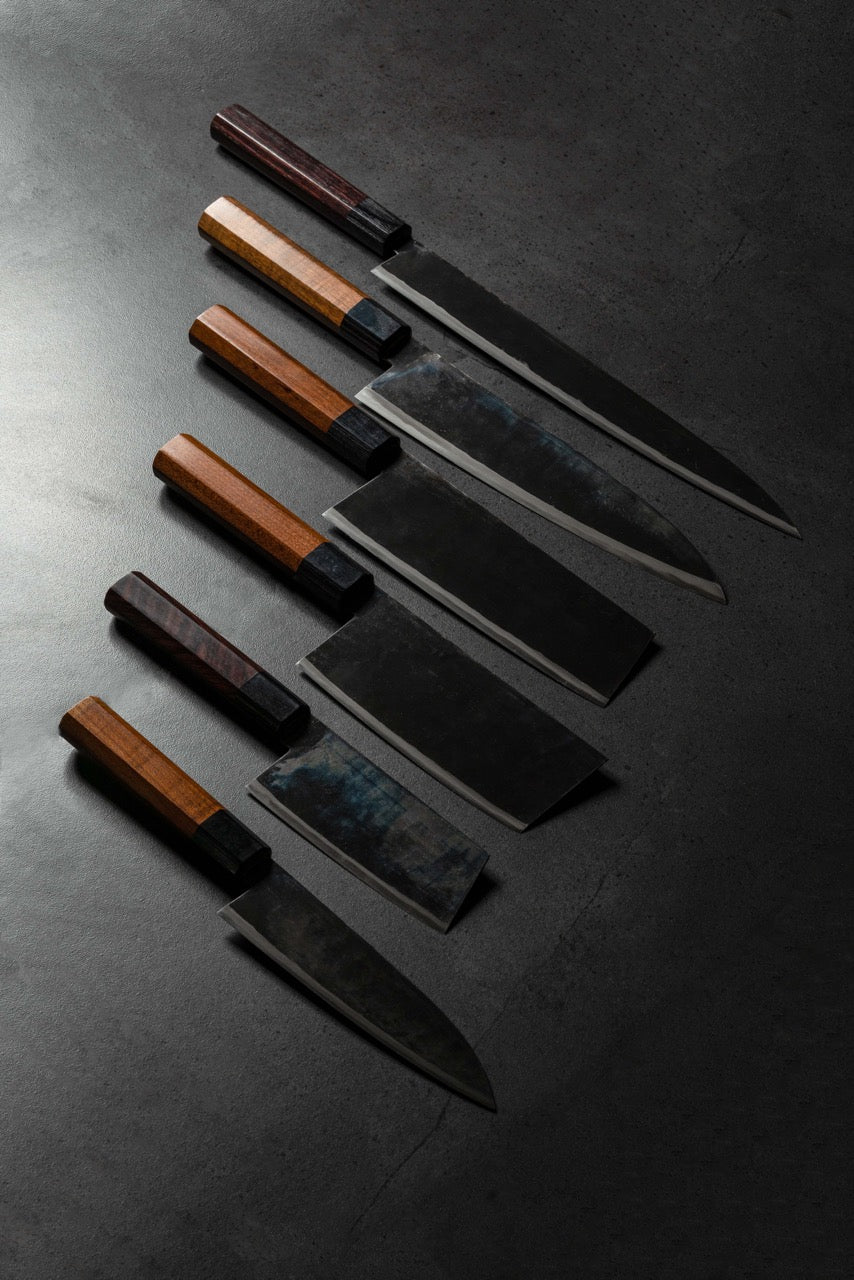
Hitohira Togashi Yohei White #1 Fuji Mizu Honyaki Gyuto 240mm Ziricote no.30
Description
Togashi-San est le forgeron derrière cette magnifique lame. L'un des 25 artisans traditionnels certifiés de la région, il a commencé à forger des lames depuis l'âge de 19 ans, en 1967. L'affûteur et polisseur Yohei-San, également un artisan traditionnel certifié dans la région, à appris à affûté le couteau à double tranchant sous la direction de l'un des meilleurs affûteurs de la région de Sakai.
La plupart des couteaux japonais sont faits comme un ''sandwich'', un noyau en acier très dur recouvert de chaques côtés par un acier plus doux. L'acier dur est ce qui rend un couteau japonais plus affûté et garde son tranchant plus longtemps que les autres couteaux. L'acier doux agit comme un amortisseur pour protéger l'acier plus dur contre les dommages. C'est la manière courante de fabriquer un couteau au Japon, mais il existe une manière plus ancienne et plus romantique de fabriquer un couteau, le honyaki.
Moins de 1% des couteaux au Japon sont des honyaki forgés. Fabriquer un couteau honyaki, c'est comme fabriquer un katana. Le couteau est fabriqué à partir d'une seule pièce d'acier et traité thermiquement de telle sorte que le tranchant est très dur et tranchant pendant très longtemps. La colonne vertébrale du couteau, bien que la même pièce d'acier, est plus douce et protège la lame de se casser.
Vous pouvez vous référez à l'article ''acier'' pour en connaître un peu plus sur ce type de couteau, Honyaki.
Tips for best results
Make sure your knife will deliver its absolute best by having it professionally sharpened at least once a year. Please note that our meticulously handcrafted Japanese knives are – unless otherwise noted – carbon steel and not stainless steel. To prevent rust, make sure the blades are patted dry – especially when cutting acidic items. Never cut frozen foods, hard products, bone, or twist the blade when using. Never soak in water after use or put in the dishwasher. After use, store in a cool, dry place and avoid high temperature fluctuations.
Our commitment to you – our customers
Warranty
Every knife we carry has a lifetime warranty from manufacturing defects and errors. For example, if the handle becomes detached or cracks appear after a few weeks of proper use. Or if there are any blade cracks from the edge to the spine. While such defects are indeed rare, they can occur. In such cases, we will exchange the knife in question or give you a refund. Each warranty case is different depending on the criteria, and we reserve the right in each and every case to evaluate the applicability of our lifetime warranty in the event of any manufacturing defects and errors.
After-Sales service
Do you get the feeling that your knife just can’t “cut it”?
Each knife we carry is supplied with a so-called “factory edge”. Our chef knife range comprises more than 200 different products. While all our handcrafted Japanese knives ship with a “factory edge”, ultimate blade sharpness can vary. If you feel that your knife’s blade edge is not performing to its full potential, feel free to contact us and we will provide you with professional sharpening for free!
Oops! What about the truly Unthinkable?
Was it just through a slight slip of the hand that your knife accidentally fell on the floor and damaged its tip and blade, or it was used to cut a hard, frozen product and chipped? Don’t despair, get in touch with us and we will solve the problem through our in-house, professional sharpening and repair service.
Simply contact us or visit our store to get a free estimate.











